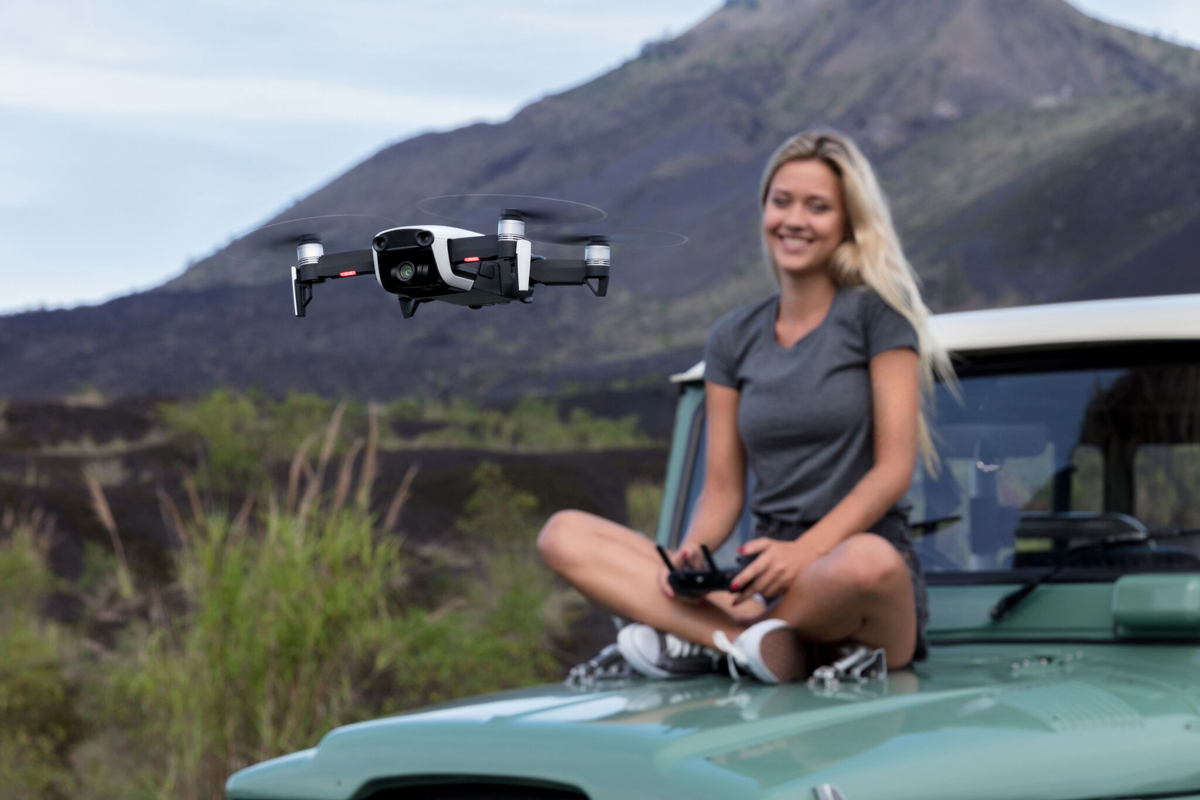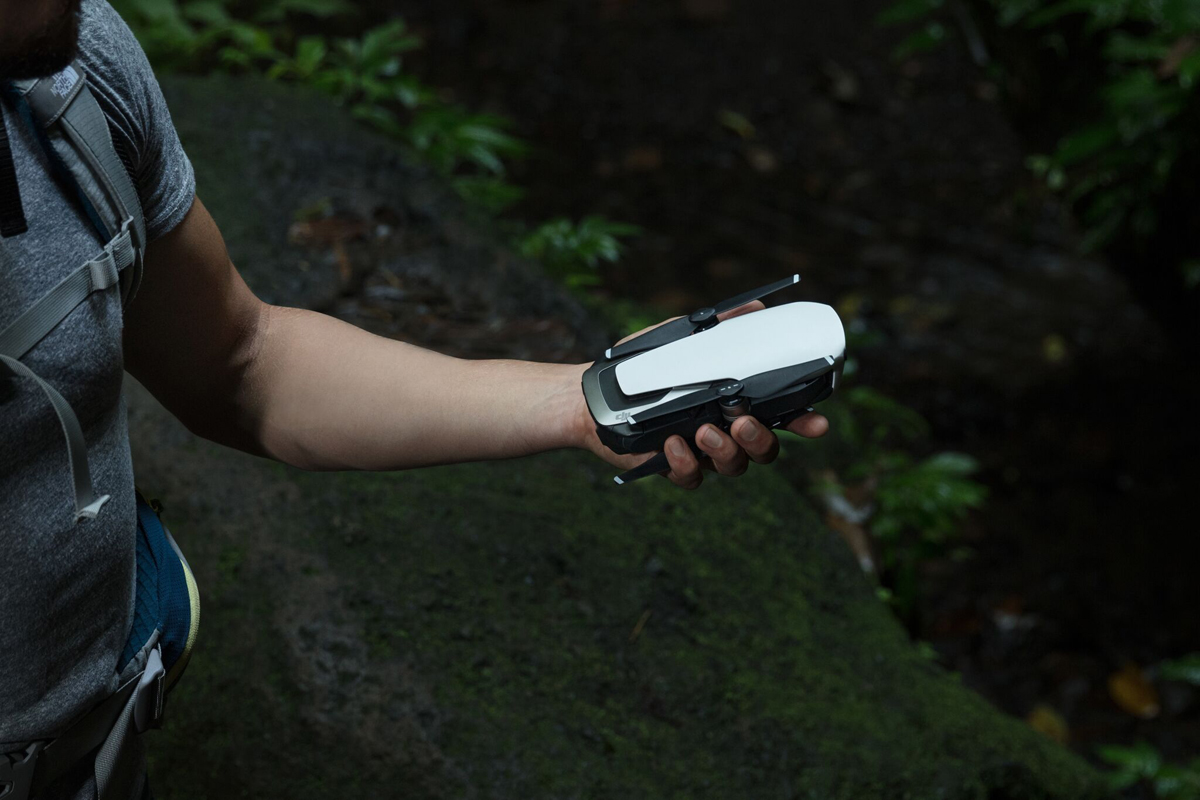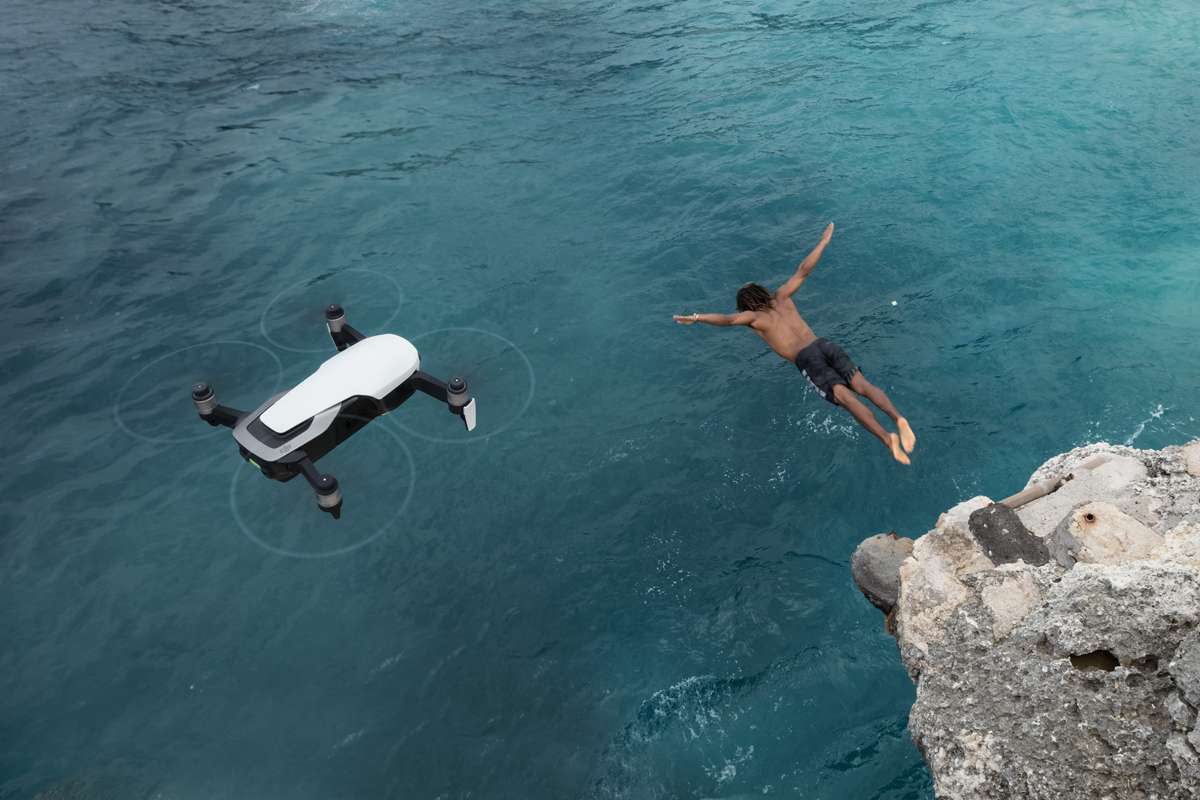DJI’s Portable, Powerful Mavic Air High-Resolution Drone
The company’s most dynamic three-axis gimbal device shoots videos in 4K

by Michael Frank
When DJI launched the Spark Drone last year, anyone who likes to take photos on the move went a little nuts. Past drones, even the reasonably small, 1.6 pound Mavic Pro (three by three by four inches) couldn’t touch the .6 pound weight of the Spark, which—even with spare batteries and rotors—fits in a six by six by 2.5 inch case. Basically, if you were thinking of going anywhere with a DSLR and spare lens, you could ditch the second lens and instead take both the pro-level camera and the Spark, and suddenly you’d be able to shoot video and stills from angles you’d never be able to capture before.
In fact, for some stories on CH, the Spark provided useful new angles that would otherwise be very hard to get. Critically, for adventurers of every stripe, Spark could take off from your palm, allowing launches from otherwise difficult locales, like the deck of a kayak, and gesture controls let you take pre-programmed shots like selfies—and you could fly via cellphone only, too, no remote required.

But today in New York, DJI debuted the Mavic Air, which is something like a merger between the best attributes of Spark and of the more robust Mavic Pro. And, if you’re a photographer or videographer, there are two important changes.
One, is that while the 1/2.3-in. sensor size doesn’t change, yielding the same 12MP still image dimensions produced by Mavic Pro and Spark, Mavic Air gets a new gimbal for superb image stabilization, and that let DJI add an HDR mode. HDR sandwiches multiple images together, and if you’ve seen this work on your smartphone or, better still, a mirrorless or DSLR, the result is a far more balanced shot, without muddy blacks or blown-apart highlights. Mavic Air also gets a unique stitching mode, so you can shoot a 360-degree panoramic still that combines 25 images into a single shot. And DJI made another update that’s important as well; Spark also allowed pano-stitching, but that only worked via DJI’s phone app, and the processing was super slow. The new system processes stitching on the drone and saves the image to your camera roll within one minute.

Probably most important, Mavic Air splits the difference between Mavic Pro and Spark on weight, coming in just below a pound total, with battery, and its footprint when folded, is 6.6 by 3.2 by 1.9 inches, which is only slightly larger than that of Spark and much more compact than the Mavic Pro.

Add in the fact that Mavic Air can also shoot 4k videos up to 30fps, and super-slo-mo at 120fps (1080p), and you start to see why this flying camera is going to provide even more shooting options than Spark. Also: There are seven additional cameras on Mavic Air that sense objects below, to the front and to the rear of the drone, and these work to auto-map routes around objects in the flight path. While other drones will stall mid-flight if they might hit something, now Mavic Air can plot a course to keep forging ahead.

One feature DJI says they’ve improved is gesture control. When this debuted on Spark we were underwhelmed. It would work, but at best it was a clever way to hand-launch the Spark, and from there it was simply easier to manually fly. But DJI says Mavic Air is programmed to have “stickier” contact with the subject, and there are now micro-gestures that allow you to move the drone farther away from you, via hand signals. That’s very handy if what you’re trying to create is a follow sequence where the drone isn’t just shooting a selfie, but providing context—you, with the Eiffel Tower in the distance and the spread of Parisian street life in between, say.

Finally, while Spark has proved incredibly capable for a smaller drone, we’re anxious to test out the stability of the Mavic Air, which should withstand flying in up to 23mph winds. The rest of the specs are pretty mind blowing, too: Up to 2.5-mile range (when flying with the remote), and a 21-minute flight time, plus a 42mph top speed. And with a starting price of $799, that includes the remote controller and prop guards, DJI’s made their latest and greatest drone pretty affordable, on top of everything else.
Images courtesy of DJI












